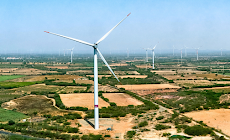
The Science Museum in London has today opened a new gallery called "Energy Revolution: The Adani Green Energy Gallery." This free gallery explores the potential of renewable energy to address climate change, featuring contemporary and historic objects from the UK and abroad.
The gallery aims to inspire visitors to create a sustainable world and showcases transformative technology and sustainability efforts. The gallery opened on March 26, 2024, and is expected to be a significant addition to the museum, replacing the previous Atmosphere gallery.
At the centre of the gallery is Only Breath, a moving sculpture that signifies the power of nature to inspire technological change. Radiating outward from the centre are plinths which display vital low-carbon renewable energy technologies for the transition, from nuclear, hydrogen and solar to wind and tidal power, alongside remarkable historic innovations that remind us how major change is possible and that many of the technologies needed to make the low-carbon energy transition already exist.
Objects in this section include a 7m long tidal turbine blade made by Scottish renewable energy company Orbital Marine Power and the first electric taxi, the Bersey cab, hailed by Londoners in 1897.
Besides, this free gallery at the Science Museum in London features several other highlights:
- Future Planet: This section explores the changes to our climate that we are already experiencing and examines how scientists use complex computer models to glimpse the climate futures we could face, depending on the decisions we make today.
- Future Power: Focusing on the projects and technologies we could use in a low-carbon future, this area showcases historic artifacts alongside contemporary technologies such as solar mirrors and nuclear fusion reactors. It highlights the people and technologies that are transforming the way energy is supplied and used.
- Our Future: Here, children's imaginative ideas of how the world will meet its energy needs in decades to come are featured, along with experts’ responses to these ideas. Imagining the future is a powerful way of generating knowledge, stimulating innovation, and shaping decisions about how we live.
%20in%20Energy%20Revolution%20The%20Adani%20Green%20Energy%20Gallery%20%C2%A9%20Science%20Museum%20Group.jpeg) |
| Study part of the Zero Energy Thermonuclear Assembly (ZETA), a nuclear fusion experiment from the 1950s |Image © Science Museum Group |
 |
| FREE OBJECT GALLERY |
















 IndianWeb2.com is an independent digital media platform for business, entrepreneurship, science, technology, startups, gadgets and climate change news & reviews.
IndianWeb2.com is an independent digital media platform for business, entrepreneurship, science, technology, startups, gadgets and climate change news & reviews.



